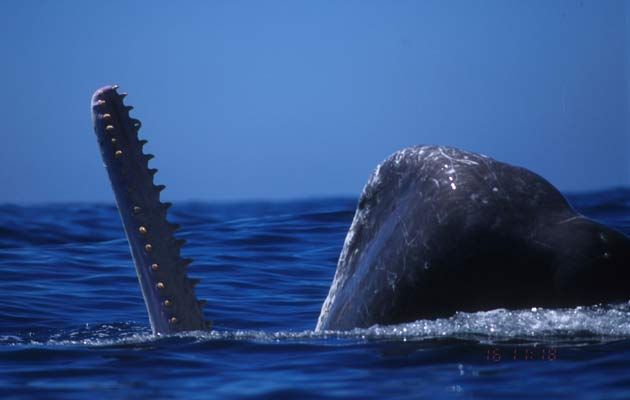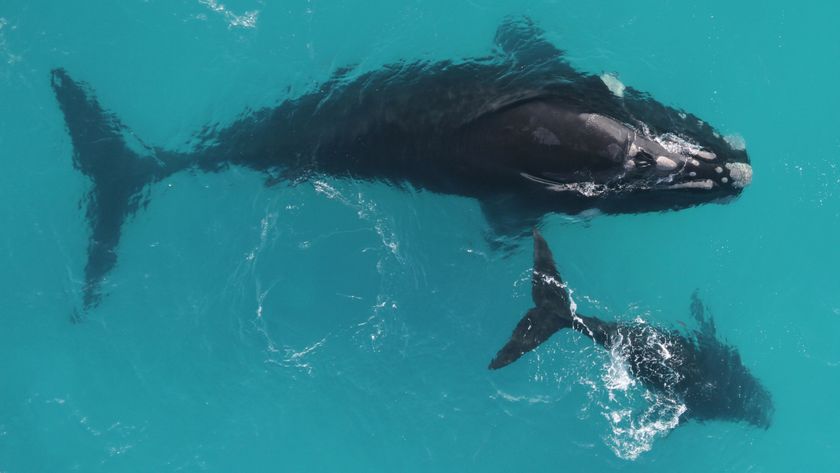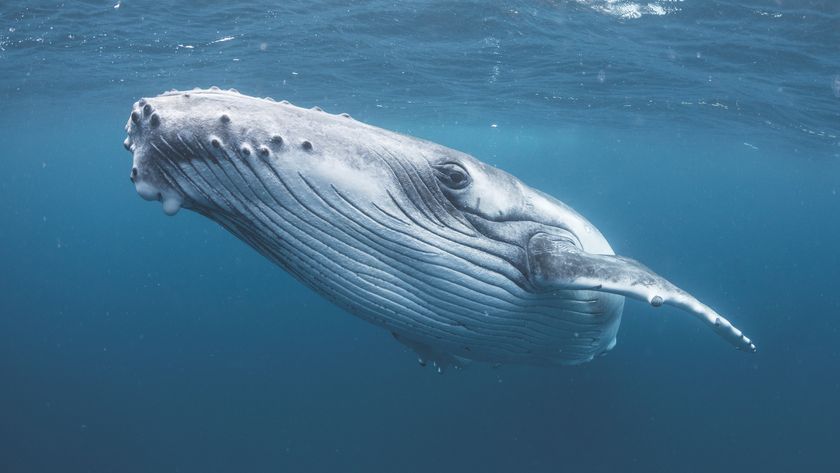Sperm Whales Form Clans to Fight Off Orcas

The threat of killer whales could be why societies of sperm whales in the Atlantic and Pacific differ so much, researchers say.
The sperm whale, the largest toothed whale, possesses the largest brain of any organism on Earth. These leviathans mostly live on giant squid and other creatures of the deep, pursuing them with the most powerful natural sonar known.
The sexes lead very different lives in sperm whales. Males leave their mothers to form ephemeral bachelor groups or to live alone, while females can develop complex societies with multiple levels of organization. At the most basic level of these societies are nearly permanent units of about 10 females that care for and suckle each other's progeny and defend their companions from attack.
Mysteriously, although the female sperm whale societies of the north Atlantic and the east Pacific are genetically similar, their social structures are substantially different. In the Pacific, units of females often temporarily gather with other units of the same clan — groups composed of thousands of females that share distinct patterns of vocal clicks known as codas. On the other hand, in the Atlantic, there is no evidence of clans, with units of females rarely grouping with others. Also, unit members in the Atlantic are more likely to be related on their mother's side than ones in the Pacific.
Now, researchers suggest these differences could be due to threats from killer whales, also called orcas.
Of the 10 known attacks on sperm whales by killer whales, none took place in the north Atlantic, while six took place in the east Pacific. (The others occurred in the Southern Ocean surrounding Antarctica.) This is despite the fact that researchers have spent more time watching living sperm whales in the Atlantic than in the Pacific.
In the Atlantic, killer whales oddly seem to ignore sperm whales. The researchers suggest this is because killer whales are very much creatures of habit, with clear preferences for specific prey even when other potential targets are available.
Sign up for the Live Science daily newsletter now
Get the world’s most fascinating discoveries delivered straight to your inbox.
"'Resident' killer whales off the West Coast of the U.S. and Canada disdain the 'wrong' kind of salmon, focusing on Chinook rather than pink or other kinds," researcher Hal Whitehead, a marine biologist at Dalhousie University in Halifax, Canada, told LiveScience. "'Pack-ice' killer whales in the Antarctic disdain the 'wrong' kind of seal, focusing on the Weddell seal rather than crabeater seals. These are picky eaters, and their pickiness is almost arbitrary. It seems highly plausible that some of them eat sperm whales; others exclude sperms." [Gallery: Seals of the World]
(Killer whales are often grouped by their distribution and eating habits, with resident killer whales foraging on certain foods in the North Pacific.)
The preferences that killer whales have for sperm whales in the Pacific might have led female sperm whale units to group together for safety. This might have eventually led them to form giant clans.
Whaling also may have played a role in these divergences, scientists noted. Female sperm whales living in the Atlantic sites researchers analyzed were virtually untouched by recent mechanized whaling involving harpoon guns; but such mechanized devastation was especially intense in the east Pacific. The destruction of social units in the Pacific may have made them less familial in nature, with survivors (regardless of kinship) banding together.
These social differences might be rooted in part in other factors, researchers noted. For instance, cultural variations that have nothing to do with environment might play a role, but are difficult to pin down definitively. In addition, Atlantic sperm whale sites are generally warmer and less rich in food than Pacific ones — as such, sperm whale grouping might be linked with prey differences, although the dearth of knowledge regarding the deep-sea squid that sperm whales prey on makes it difficult to know for sure.
Future research can focus on distinctions between sperm whales' social behavior in different locations within each ocean, Whitehead said.
The scientists detailed their findings online March 30 in the International Journal of Primatology.

Most Popular




